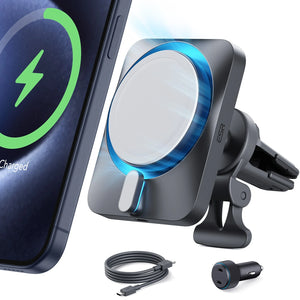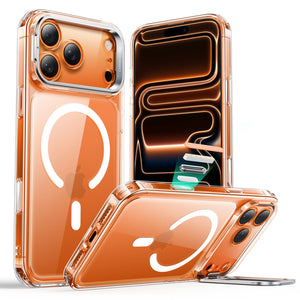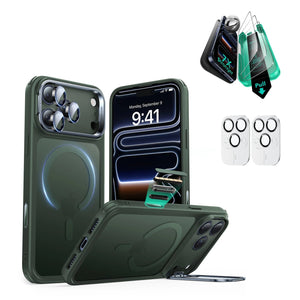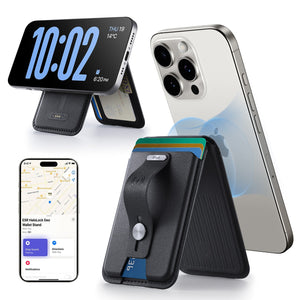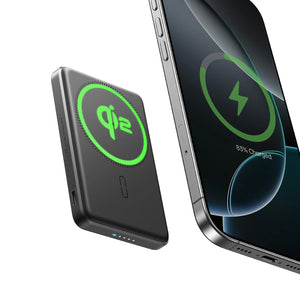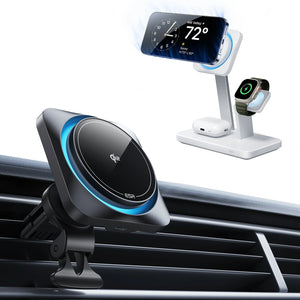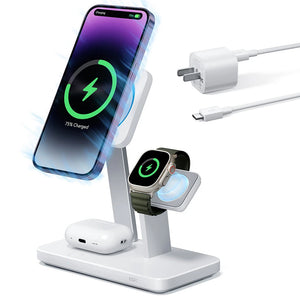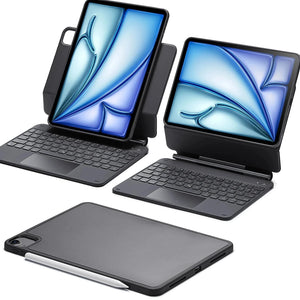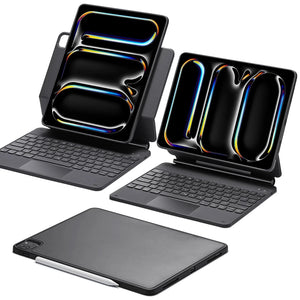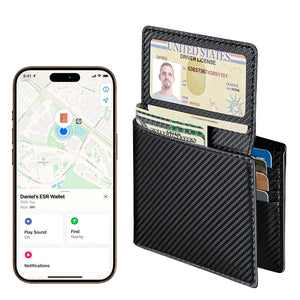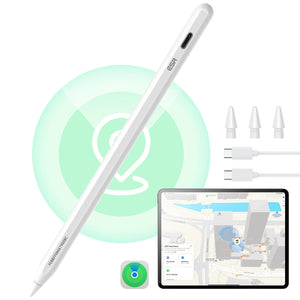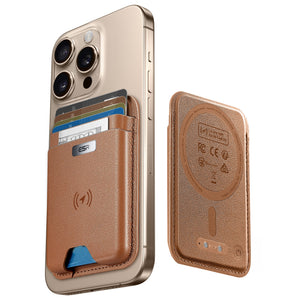Losing track of your keys or bag can send you into a panic mode within seconds. That is exactly why Apple introduced the AirTag, a tracker to help locate your essentials in seconds. Yet, many users find themselves wondering about one key detail: how does the battery work?
Unlike most Apple devices, AirTag don’t require charging at all. However, that doesn’t mean you can ignore it entirely. Let’s explore how long the AirTag battery life is, and a better alternative.

Replace Airtag Battery or Phone Wallet:
Why AirTag’s “No Charging” Design Is a Double-Edged Sword
Find My Wallets vs AirTag: Which Tracking Solution Wins for Your Essentials?
ESR Classic Magnetic Wallet: Your All-in-One Tracking Solution
Pro Tips: Extend Your Tracker’s Lifespan
Why AirTag’s “No Charging” Design Is a Double-Edged Sword
Although not needing to charge an AirTag sounds like a great idea, it’s not always perfect. Since you will have to deal with a CR2032 replacement later, let’s look at both sides before you think it’s completely hassle-free:

1. The Hidden Cost of Battery Replacements
While AirTag don’t need charging, their CR2032 coin batteries won’t last forever. On average, AirTag battery life is about one year with normal use. A new one usually costs around $2 individually. It’s easy to replace, but the added costs end up surprising many.
2. When AirTag Fails: Real-Life Tracking Gaps
Losing a signal from your AirTag during a critical moment can make a situation worse. Since it can’t plug into a power bank, you’re stuck if the battery dies. It is not the only issue, as a few real-world problems you should know include:
● Battery dies faster in extreme heat or cold, which affects the AirTag’s internal chemical reactions.
● Reset becomes necessary once the battery runs out, delaying your ability to locate lost items.
● Some people misuse AirTag to secretly track others, raising serious concerns.
Find My Wallets vs AirTag: Which Tracking Solution Wins for Your Essentials?
AirTag work well, but they’re not the only smart trackers out there. Many Find My integrated accessories, like ESR’s Geo Wallet, offer different features. The following is a comparison of what each option brings to the table to help you decide:

1. Say Goodbye to Batteries: How Integrated Trackers Work
Unlike AirTag, some trackers don’t need battery changes at all to offer much more comfort. As a magnetic wallet with built-in tracking works differently, let’s look at what makes them stand out below:
1. Interchangeability
AirTag must fit into something like a wallet card slot. On the other hand, magnetic wallets with built-in trackers combine, cutting device clutter by 25% and keeping your carry slimmer without extra add-ons.
2. Ecosystem Dependence
Both use Apple’s Find My Network, but AirTag relies on iPhones with UWB for exact tracking. Integrated wallets just need Bluetooth, making them more flexible with older iOS devices or limited-range needs.
3. Scenario Replacement
Everyday items (wallets/cards): Integrated wallets win with their slim designs and no added bulk. Occasional-use items (keys/luggage): An AirTag with a holder is cheaper and works well for infrequent tracking.
Conclusion
Neither solution fully replaces the other. Integrated wallets are ideal for daily carry items, but 79% do consider wallet thickness as a major annoyance. On the other hand, AirTag works best for less-used things, where tracking cost and size matter less.
2. Practicality Comparison: Key Dimensions Breakdown
|
Feature |
AirTag + Wallet |
Find My Integrated Wallet |
|
Tracking Precision |
UWB (~±10 cm) with U1 chip |
Bluetooth only |
|
Battery/Alerts |
CR2032 (~1 yr); 31% forget it |
Recharge (~5 mo); alerts |
|
Bulk Added |
~8 mm thickness |
Only ~0.6 in thin design |
|
Security |
No built-in RFID shielding |
Native RFID-blocking |
|
Compatibility |
iPhone required for full UWB use |
Works with Bluetooth-enabled iPhones |
3. Sustainability: Environmental Impact and Long-Term Costs
|
Aspect |
AirTag |
Integrated Wallet (e.g., ESR) |
|
Battery Type |
CR2032 coin (non-rechargeable) |
Lithium polymer (rechargeable) |
|
Battery Impact |
1 battery discarded/year; adds to 200M+ global waste |
500+ cycles; cuts e-waste by ~75% |
|
Toxicity Risk |
High (heavy metal leakage from coin cells) |
Low (sealed lithium cells; longer use) |
|
Device Lifespan |
Shell lasts 5+ years; battery replaced annually |
3–4 years per battery; device under 2-year warranty |
|
Regulatory Compliance |
Not aligned with EU 2027 battery goals |
Rechargeable/removable design ready for EU compliance |
4. Price Structure: Short-Term Expenditure vs. Long-Term Costs
|
Cost Type |
AirTag + Wallet |
Integrated Wallet (e.g., ESR Geo) |
|
Initial Investment |
$29 (AirTag) + $23 (holder) = $52 |
$42 (device with built-in tracking) |
|
2-Year Total |
$52 + $5 (2x battery) = $57 |
$42 + $0 (charging) = $42 |
|
5-Year Total |
$52 + $12.5 (5x battery) = $64.5 |
$42 + $35 (full replacement) = $77 |
|
Recommended |
Longer-term, 3> years |
Short-term, <3 years |
|
Con |
High maintenance |
Battery degrades |
ESR Classic Magnetic Wallet: Your All-in-One Tracking Solution
Introducing a sleek alternative to standard tracking setups, this MagSafe wallet combines card storage and Find My tracking in one device. ESR Classic Magnetic Wallet holds up to 5 cards and attaches securely via strong magnets. As a matter of fact, it has around 3,200g of pull and acts as a stand. The sturdy hinge glides open effortlessly to set up a stable stand at any angle from 15° to 170°.

Made with anti-degaussing lining, it blends durability and style while offering RFID protection and carrying convenience. Furthermore, its magnets are twice as strong as Apple’s MagSafe wallet.
1. Slim Design, Zero Compromise
● Ultra-thin build: Just 5.51 x 4.13 x 0.67 inches—57% slimmer than AirTag + wallet setups
● Style Options: Available in 4 modern colors
● RFID Protection: Blocks unauthorized scanning to keep cards safe from wireless theft
● Minimal Pocket Bulk: Fits comfortably in slim jeans
● No Added Layers: Combines storage, tracking, and security
2. Charging Made Effortless vs. AirTag’s Battery Swap
Forget the yearly battery swap as ESR’s magsafe wallet charges in just 1.5 hours using a magnetic cable. Unlike AirTag, it also shows real-time location to give you clear tracking instead of just the last seen spot.

Pro Tips: Extend Your Tracker’s Lifespan
Many people wonder, “How long does an AirTag battery last?” So, how can you make it last even longer?
Keeping your tracker in top shape takes more than just regular use. Simple habits, like charging with a
1. AirTag Users: Maximize Battery Health
● Turn off “Important Locations” in iOS settings to reduce background battery drain
● Avoid heat exposure above 35°C inside parked cars
● Store in cool & dry space when not in used.
● Remove the battery from inactive ones to avoid slow drain and corrosion.
2. Want to Extend Your Wallet’s Battery Life? Use Fast Charging Technology
Using a fast charger helps extend your wallet’s battery life by delivering faster, more efficient power with up to 15W charging. It reduces heat buildup, shortens charge time to near an hour, and protects battery health long-term.
Call to Action
|
Use Case |
Best Tracking Solution |
Why It Works Best |
|
Everyday Wallet/Card Use |
ESR Geo Wallet |
Built-in Find My, ultra-slim, RFID-safe, no extra parts |
|
Keys, Pet Collars, Small Items |
AirTag + Anti-Loss Kit |
Lightweight, water-resistant, UWB precise, clips on easily |
|
Luggage, Backpacks, Long Storage |
AirTag + Time Capsule Holder |
10-year sealed battery, rugged and travel-safe |
|
Office Badges or ID Cards |
ESR Geo Slim Card Tracker |
Card-sized, fits ID holders, rechargeable, discreet tracking |
|
Kids’ School Bags or Gear |
AirTag with Silicone Case |
Easy to clip on, sound alerts, safe, and removable when needed |
Tired of Replacing AirTag Batteries? Explore the ESR Classic Wallet – the slimmer, smarter way to track your wallet effortlessly!





